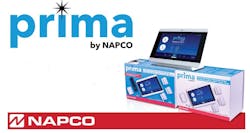The prevalence of cloud-based access control is becoming more widespread — and it’s easy to see why. Cloud-based access control — the ability to manage a building’s security via the internet — can be done from anywhere at any time. Plus it is easier to install, simpler to manage and less expensive. Some of the benefits include:
- Anywhere access: With cloud management, there are no geographical limitations. You can manage the security of a building or multiple buildings from one interface located anywhere, as long as you are connected to the internet.
- Easy install: Because cloud management only requires door hardware, a reader, a controller and an internet connection, installs are quick and easy. There’s no server or other on-premise equipment (such as a dedicated computer) to install.
- Simplified management: Everything is managed through your web browser, with automatic software/firmware updates.
- Cost-savings: Onsite servers and appliances are eliminated with cloud management. This, in turn, decreases costs associated with IT maintenance and electricity. By reducing both direct and hidden costs, cloud-based access control provides a lower total cost of ownership.
Like any technology, though, there are downsides. Some end-users prefer on-premise access control because it provides more features and functionality, thanks to local deployment and the software stack these solutions tend to be built on. Additionally, some believe that cloud-based access control is not as secure. Others, however, advocate that cloud-based solutions are equally — if not more — secure than traditional on-premise ones.
Important Considerations
So, how do you determine what is the right solution for your facility? There are several key factors to consider when deciding between an on-premise solution and a cloud-based one. End-users need to consider:
- Size of building and the number of openings
- Geography and the number of locations
- Ability to provide relatively constant internet access
- Ability to provide long-term maintenance/management
An assessment of these factors will help a building owner or manager decide which is more appropriate and affordable for their facility.
Cloud Management Changes Everything
Access control is purchased and maintained differently with cloud management, essentially changing the technology, channel and ownership models that have long supported them. End-users and integrators alike are impacted in several ways including:
- Technology: Cloud-managed systems require more IT-centric skills so there’s far less hardware installation required — which saves end-users money, but causes integrators to re-examine how they make their money.
- Channel: Acquisition costs are much lower for end-users, since there’s less equipment and typically less IT overhead, but the tradeoff is higher operational costs. These technology changes have the potential to shift business to the IT-centric providers who work well with IT departments. Integrators need to re-examine how they support end-users and ensure staffs are equipped to partner with IT departments.
- Ownership: Because entry into the market is more affordable with cloud management, the capital expenditure, or CAPEX, decreases, but the OPEX, or the operational costs of running a business, often increases. End-users change their expense sheet, and integrators need to shift their revenue stream accordingly to avoid diluting the lower CAPEX advantage.
From www.securityinfowatch.com
Scott Dennison has been the Allegion Business Leader, Commercial Electronic Locks and Software since May 2016. Prior to Allegion, he was the director of marketing & product management at Tyco Security Products.






